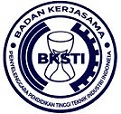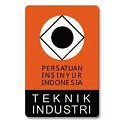Usulan Dalam Mereduksi Kegagalan Untuk Perbaikan Kualitas Pada Industrial Automation
Abstract
One of the leading automation companies in Indonesia is producing production to meet the needs of industrial automation or robot parts, and to meet the needs of companies using the linear guidance techniques available on 3D Printers. There is a noticeable difference in consumer behavior, where the quality of hand-held connectors is poor, which is reflected in the increase in the number of complaints that exceed the company's monthly limit. Using the process control statistics (SPC) method, cause and effect, and the 5W+1H method as in the previous study, the proposed improvements will be determined by the production of hand connectors on 3D Printers. Based on the results of the study, 2 points approached the control limit (UCL) on the P chart, which is the 5th and 10th observation data. This indicates that there is a mismatch in the product being produced. Causes of differentiation are derived based on the following factors: Engine (non-optimal machine condition); Methods (design work that requires new ideas to meet customer needs); Material (PLA does not meet standard and Expiration); Human (does not work according to SOP and employees are not in prime condition); Environment (high humidity level). The proposed improvement is obtained by the 5W + 1H method.
Keywords: Quality Improvement, Industrial Automation, SPC, Cause and Effect Diagram, 5W+1H
Full Text:
PDFReferences
Abu Jor, M., Alam, S., & Alam, M. J, “Application of Six Sigma Concept in Shoe Manufacturing for Quality Improvements: A Case Study,” European Journal of Advances in Engineering and Technology, 5(7), 450-458. 2018.
Adhikari, S., Sachdeva, N., & Prajapati, D. R, “Root cause analysis of defects in automobile fuel pumps: a case study,” International Journal of Management, IT and Engineering, 7(4), 90-104. 2017.
Afzaal, N., Aftab, A., Khan, S., & Najamuddin, M, “To analyze the use of Statistical Tools for Cost effectiveness and Quality of products,” IOSR Journal of Humanties and Social Science, 20(1), 47-57. 2015.
Beatrix, M. E., & Triana, N. E, “Improvement Bonding Quality of Shoe Using Quality Control Circle,” Sinergi, 23(2), 123-131. 2019.
De Macedo, B. A. M., SOUZA, L. E., JÚLIO, J. P. Q., & PENHA, T. F, “Application of quality tools in the control of non-compliance of a medium-sized furniture industry company,” Revista de Gestão & Tecnologia, 4(1). 2016.
Dharma, F. P., Ikatrinasari, Z. F., Purba, H. H., & Ayu, W, “Reducing non conformance quality of yarn using pareto principles and fishbone diagram in textile industry,” In IOP Conference Series, april. 2019, Materials Science and Engineering, Vol. 508, No. 1, p. 012092.
Knop, K., & Mielczarek, K, “Using 5W-1H and 4M Methods to Analyse and Solve the Problem with the Visual Inspection Process-case study”, 2018, In MATEC Web of Conferences, Vol. 183, p. 03006.
Lim, S. A. H., Antony, J., & Arshed, N, “A critical assessment on SPC implementation in the UK food industry,” Journal of Systemics, 14(1), 37-42. 2016.
Zasadzień, M., & Midor, K, “Statistical process control as a failure removal improvement tool,” Acta technologica agriculturae, 21(3), 124-129, 2018.
DOI: http://dx.doi.org/10.24014/jti.v7i2.12239
Refbacks
- There are currently no refbacks.
Copyright (c) 2021 tosty maylangi sitorus

This work is licensed under a Creative Commons Attribution-NonCommercial-ShareAlike 4.0 International License.
Jurnal Teknik Industri
P-ISSN 2460-898X | E-ISSN 2714-6235
Published by:
Industrial Engineering Department
Universitas Islam Negeri Sultan Syarif Kasim Riau, Indonesia
Office Address:
H.R. Soebrantas KM 15.5, Tampan, Pekanbaru, Riau, Indonesia 28293
email: jti.fst@uin-suska.ac.id
Indexed by:
JTI : Jurnal Teknik Industri under a Creative Commons Attribution-NonCommercial-ShareAlike 4.0 International License.

















